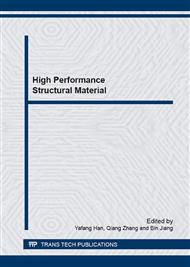[1]
Ellsworth MJ, Chip power density and module cooling technology projections for the current decade, Proceedings of the Ninth Intersociety Conference on Thermal and Thermomechanical Phenomena in Electronic Systems, 2(2004) 707–708.
DOI: 10.1109/itherm.2004.1318362
Google Scholar
[2]
Zweben C, Advances in composite materials for thermal management in electronic packaging, JOM. 50(1998) 47–51.
DOI: 10.1007/s11837-998-0128-6
Google Scholar
[3]
Zweben C, Thermal management and electronic packaging applications, ASM Handbook. 21 (2001) 1078–1084.
Google Scholar
[4]
P.W. Ruch, O, Beffort, Selective interfacial bonding in Al(Si)–diamond composites and its effect on thermal conductivity, Composites science and technology. 66(2006) 2677-2685.
DOI: 10.1016/j.compscitech.2006.03.016
Google Scholar
[5]
O. Beffort, F.A. Khalid, L. Weber, P. Ruch, U.E. Klotz, S. Meier, S. Kleiner, Diamond Relat. Mater. 15(2006) 1250–1260.
DOI: 10.1016/j.diamond.2005.09.036
Google Scholar
[6]
P.W. Ruch, O. Beffort, S. Kleiner, L. Weber, P.J. Uggowitzer, Selective interfacial bonding in Al(Si)–diamond composites and its effect on thermal conductivity, Compos. Sci. Technol. 66(2006) 2677–2685.
DOI: 10.1016/j.compscitech.2006.03.016
Google Scholar
[7]
M.D. Losego, M.E. Grady, N.R. Sottos, D.G. Cahill, P.V. Braun, Effects of chemical bonding on heat transport across interfaces, Nat. Mater. 11(2012) 502–505.
DOI: 10.1038/nmat3303
Google Scholar
[8]
C. Edtmaier, L. Weber, R. Tavangar, Surface Modification of Diamonds in Diamond/Al-Matrix composite, Advanced Materials Research. 59(2009) 125-130.
DOI: 10.4028/www.scientific.net/amr.59.125
Google Scholar
[9]
Christian Monachon, Ludger Weber, Effect of diamond surface orientation on the thermal boundary conductance between diamond and aluminum, Diamond & Related Materials. 39(2013), 8-13.
DOI: 10.1016/j.diamond.2013.06.017
Google Scholar
[10]
H Feng, JK Yu, Microstructure and thermal properties of diamond/aluminum composites with TiC coating on diamond particles, Materials chemistry and physics, (2010).
DOI: 10.1016/j.matchemphys.2010.08.003
Google Scholar
[11]
P.W. Ruch, O. Beffort, Selective interfacial bonding in Al(Si)–diamond composites and its effect on thermal conductivity, Composites science and technology. 66(2006) 2677-2685.
DOI: 10.1016/j.compscitech.2006.03.016
Google Scholar
[12]
Hong Guo, Zhihui Bai, Ximin Zhang, Fazhang Yin, Chengchang Jia, Yuanyuan Han, Evolution of Thermo-physical Properties of Diamond/Cu Composite Materials under Thermal Shock Load, Rare Metals. 33(2014) 185-190.
DOI: 10.1007/s12598-014-0220-8
Google Scholar
[13]
I.E. Monje, E. Louis, Optimizing thermal conductivity in gas-infiltrated aluminum/diamond composites by precise processing control, Composites. 48(2013) 9-14.
DOI: 10.1016/j.compositesa.2012.12.010
Google Scholar
[14]
D.P. H Hasselman, Lloydf. Johnson, Effective thermal conductivity of composites with interfacial thermal barrier resistance, Journal of Composite Materials. 21(1987) 508-510.
DOI: 10.1177/002199838702100602
Google Scholar
[15]
Hui Chen, Chengchang Jia, Shangjie Li, Xian Jia, Xia Yang, Selective interfacial bonding and thermal conductivity of diamond/Cu-alloy composites prepared by HPHT technique, Metallurgy and Materials. 19(2012) 364-370.
DOI: 10.1007/s12613-012-0565-7
Google Scholar


